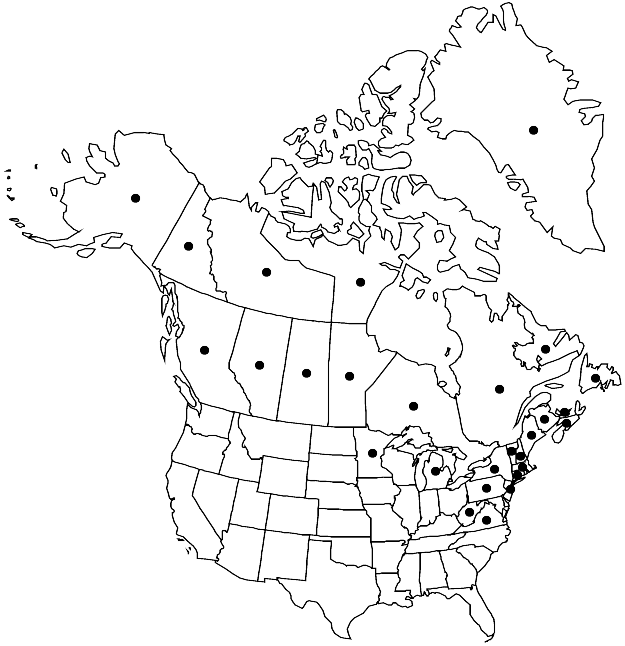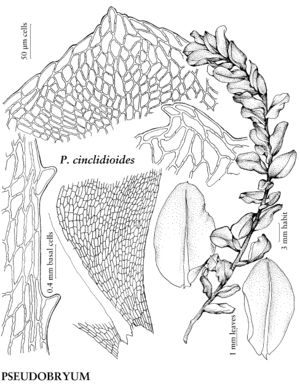Pseudobryum cinclidioides
Ann. Bot. Fenn. 5: 147. 1968.
Plants large, often growing with other bryophytes. Leaves with apiculus blunt or sharp; medial laminal cells with tapered ends, slightly smaller near margins. Capsule with annulus 2-seriate or 3-seriate, revoluble; endostome cilia in groups of 2–4.
Phenology: Capsules mature summer.
Habitat: Moist soil or humus in swamps, fens, wet meadows, streams, wet depressions in forests, boulders, tree roots
Distribution

Greenland, Alta., B.C., Man., N.B., Nfld. and Labr., N.W.T., N.S., Nunavut, Ont., P.E.I., Que., Sask., Yukon, Alaska, Conn., Maine, Mass., Mich., Minn., N.H., N.J., N.Y., Pa., Vt., Va., W.Va., Europe, Asia
Discussion
Pseudobryum cinclidioides is uncommon but one of the species easiest to recognize in Mniaceae. The broad, often green or yellow-green leaves with indistinct borders and elongate, Bryum-like laminal cells usually in diagonal rows are distinctive. The large laminal cells make it readily identifiable in the field with a hand lens.
Selected References
None.
